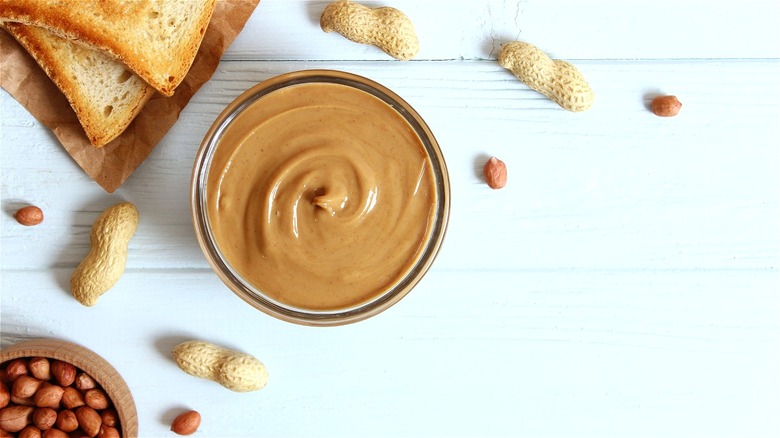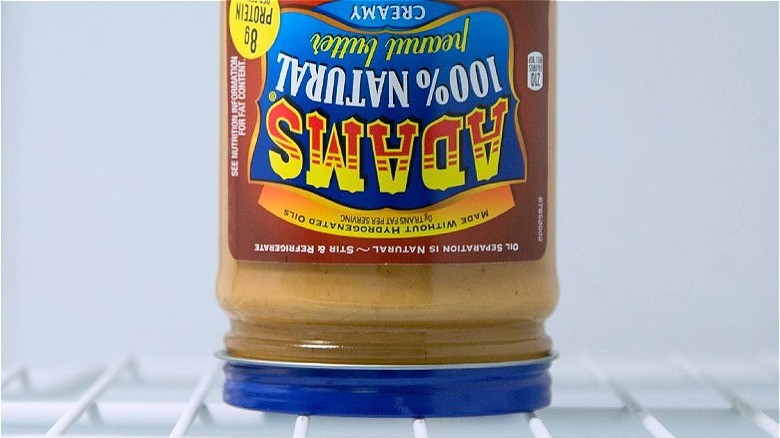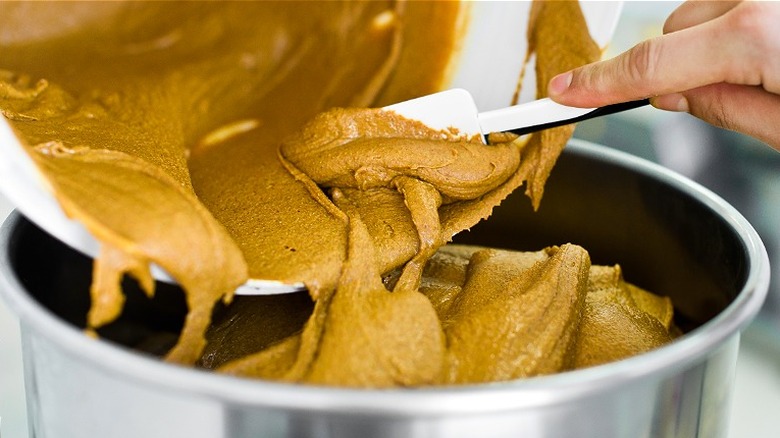Storing Your Peanut Butter This Way Will Avoid An Oily Mess
We may receive a commission on purchases made from links.
There aren't many foods you can enjoy right from the jar the way you can with peanut butter. Known for its sticky consistency, peanut butter is one of the most difficult foods to clean when spilled due to its creamy, oily makeup. Having a storage method that ensures the least amount of error means you can enjoy more of this nutty, protein-packed spread without having to worry about the potential mess.
Not all jars of peanut butter are created equal, though. For a product to be labeled as peanut butter (not to be confused with "peanut butter spread"), the USDA (via the National Peanut Board) states products must be made with at least 90% peanuts and free from non-hydrogenated oils and added flavors. But why is natural peanut butter runnier and seemingly more oily than its conventional cousins?
According to The Peanut Institute, jars of natural peanut butter usually contain only one or two ingredients, with peanuts serving as the main component. These pure varieties are usually not pre-blended, so natural separation does occur resulting in a runnier, more textured spread. So, how do you store natural peanut butter to keep it fresh (while also indirectly blending back into its naturally occurring oils)?
The best way to store natural peanut butter
While peanut butter is easy to make at home, most Americans have no problem buying the nutty spread in stores. According to Statista, in 2020, 95.46 million Americans consumed at least one jar of peanut butter per month. But knowing the right way to store this beloved staple, especially the natural varieties, requires creative problem-solving.
In terms of general recommendations for storage, Healthline claims refrigeration is key to extending natural peanut butter's shelf life. However, most varieties can last up to a year in your pantry unopened and 30 days once used. Yet how can you curtail that oily separation at the top of every jar?
The Government of Canada explains that the oil collected at the top of your natural peanut butter occurs due to a lack of stabilizers added to the spread. Though it's perfectly safe for consumption, mixing this oil back into the jar each time you want a PB&J can be quite the hassle. To avoid manually mixing, Reader's Digest suggests storing peanut butter upside-down. This way, the natural oils will travel back through the peanut butter and rise to the other side. Just flip it back over after your next use.
The various methods of mixing natural peanut butter
Storing natural peanut butter upside-down isn't the only method you can try when attempting to mix back in that pesky layer of oil. While you could just use a spoon and manually mix your peanut butter every time you open the jar to scoop some out, there are specific products available on the market to help you avoid the mess. A search for "peanut butter mixer" on Amazon yields more than 1,000 results for all sorts of gadgets made specifically to mix your natural nut butter without spills.
If you're interested in trying another method with a kitchen appliance you already have at home, Popsugar swears by the immersion blend method. Simply place your immersion blender directly into a fresh jar of nut butter and turn it to the lowest setting. The oil should be blended back into the jar's contents after just a few short minutes. Now that you know the best ways to deal with the nettlesome oil on top of your favorite protein-packed spread, you're free to try all the healthiest peanut butter brands available.


